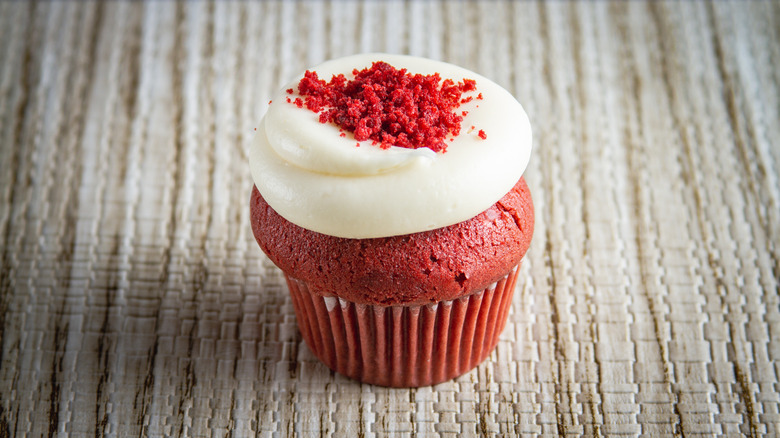Ina Garten's Secret For Effortlessly Moist Red Velvet Cupcakes
As one of the undisputed legends of American cooking, with more than two decades on television and 13 cookbooks under her belt — it's safe to say that Ina Garten knows more than most about the subject of baking. And one of her absolute favorite treats to whip up is a batch of silky, crimson-colored red velvet cupcakes. "Everybody likes those, right?" she asks viewers in a segment of her show "Barefoot Contessa" on the Food Network's official YouTube channel. The secret to her red velvet cupcakes, she says, is buttermilk.
Made from either the remnants of cream that's been churned into butter, or milk that's had a special strain of acidic bacteria added to it, buttermilk is often included in recipes for red velvet cakes (fun fact, they originally got their color from a chemical reaction between this, and the cocoa powder used in the recipe; nowadays, this hue comes from red food coloring). It is also commonly used in homemade pancakes, biscuits, and waffles. Garten shares that buttermilk is "what makes the cake really moist," but as it turns out, that's not all this tangy liquid brings to the table.
Why Ina Garten uses buttermilk in red velvet cupcakes, and you should too
Moist cake is the best kind of cake, period. In the case of Ina Garten's cupcakes, moisture is a by-product of the buttermilk breaking down proteins and gluten within the mixture, giving these treats a superior soft and "velvety" texture that can't be achieved through the use of regular milk or water alone. It's this ability to tenderize that often sees buttermilk also used as a marinade for meats.
However, this isn't the only reason that you should follow Garten's lead and make buttermilk your red velvet bestie. This tart-tasting ingredient will also give your cakes a more complex overall flavor, helping to combat the richness of the cocoa powder, as well as the sweetness of the cream cheese frosting that's typically used to top the cupcakes. Buttermilk also creates carbon dioxide when it comes into contact with baking soda, helping baked goods to rise (which can be a matter of life or death, when it comes to baking cakes!).
If the store-bought version is hard to come by, you can actually make your own buttermilk by adding a little lemon juice or distilled vinegar to regular milk; you could even use plain yogurt, in a pinch. Let it sit for 10 minutes or so, then add this to your cake batter. Never underestimate the power of buttermilk — because it might just give you the best red velvet cupcakes of your life.

